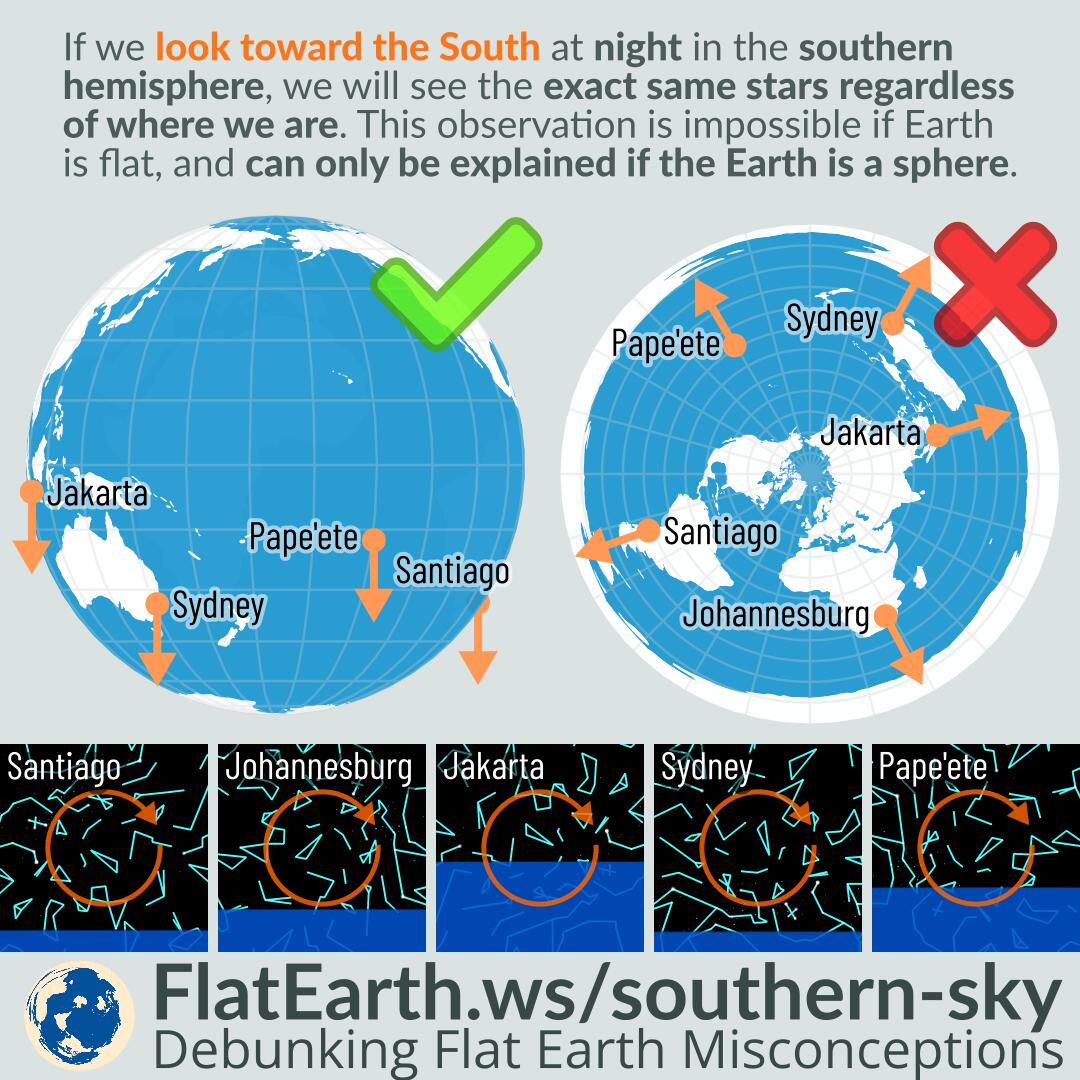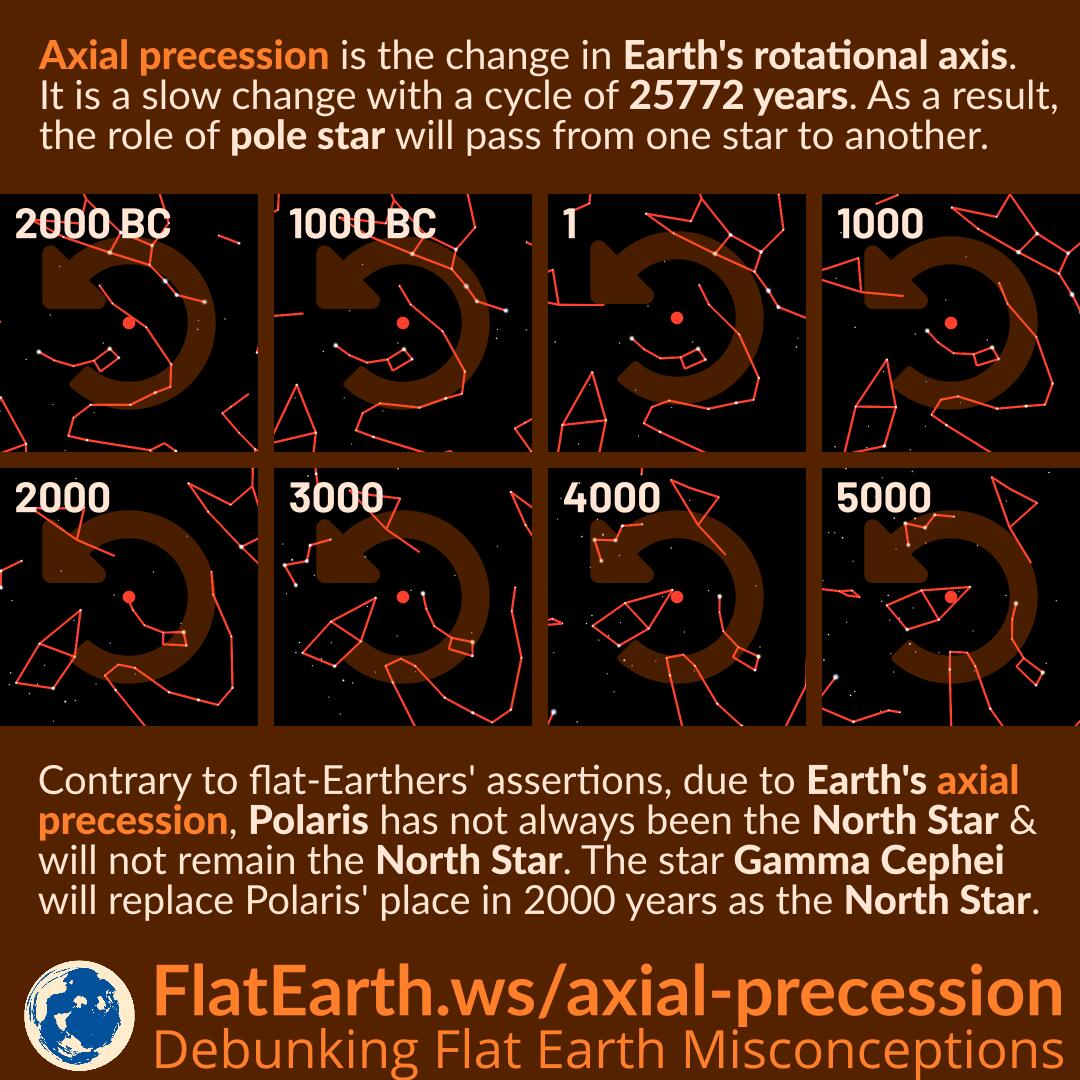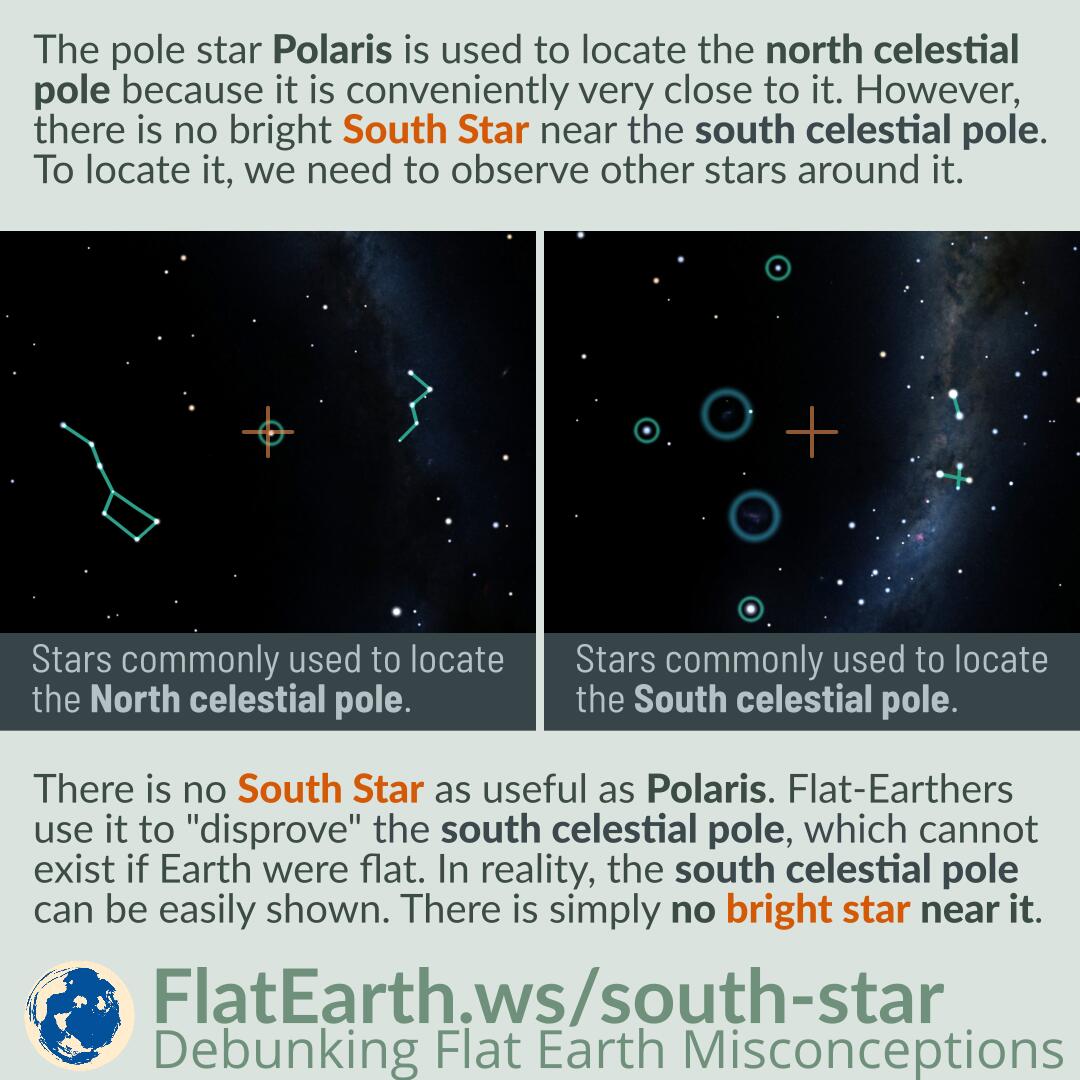If we look toward the south at night in any location in the southern hemisphere, we will see the same set of stars. We will see the stars rotating around the south celestial pole, in the Octans constellation, near the star Sigma Octantis.
The flat-Earth model cannot explain the phenomenon. Looking at the so-called ‘flat-Earth map,’ we should see another set of stars on a different location in the southern hemisphere. The reason is that the flat-Earth model is a false representation of the Earth.
Continue reading “Stars in the Southern Sky Prove Earth is a Rotating Sphere”




